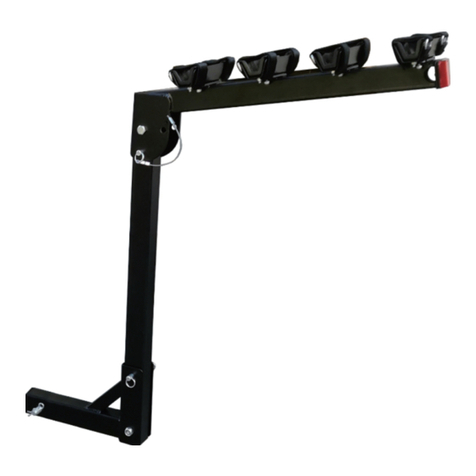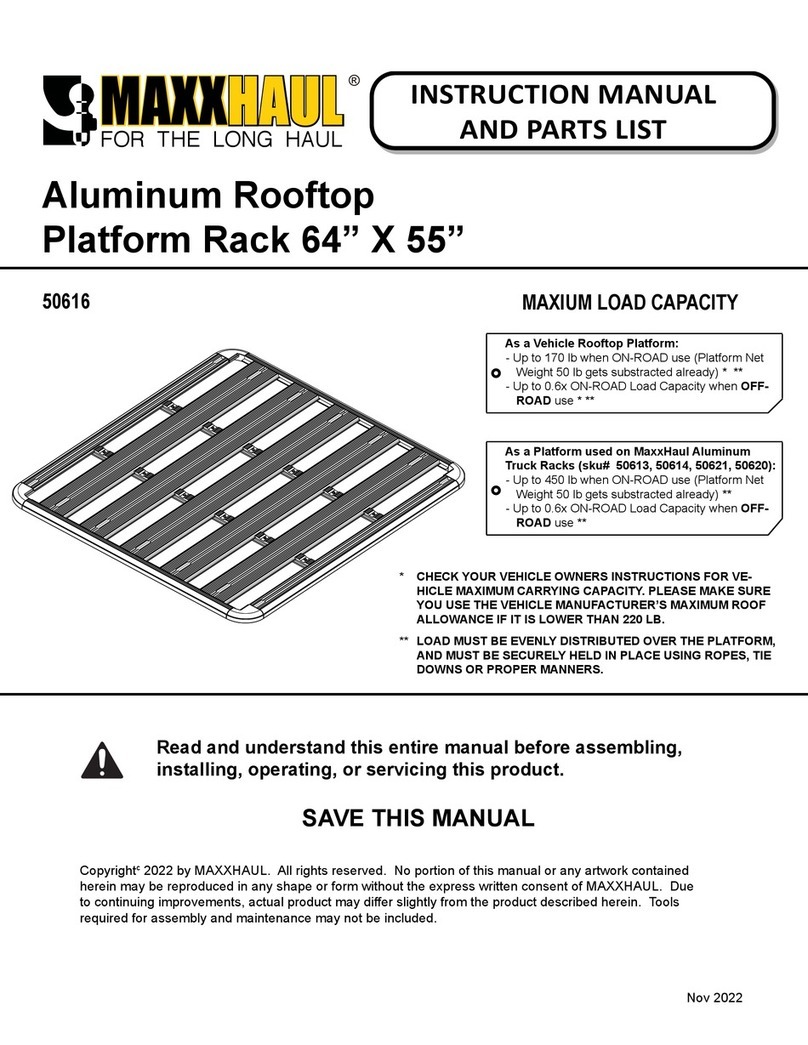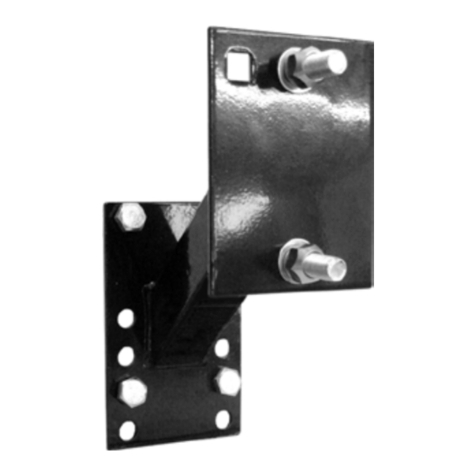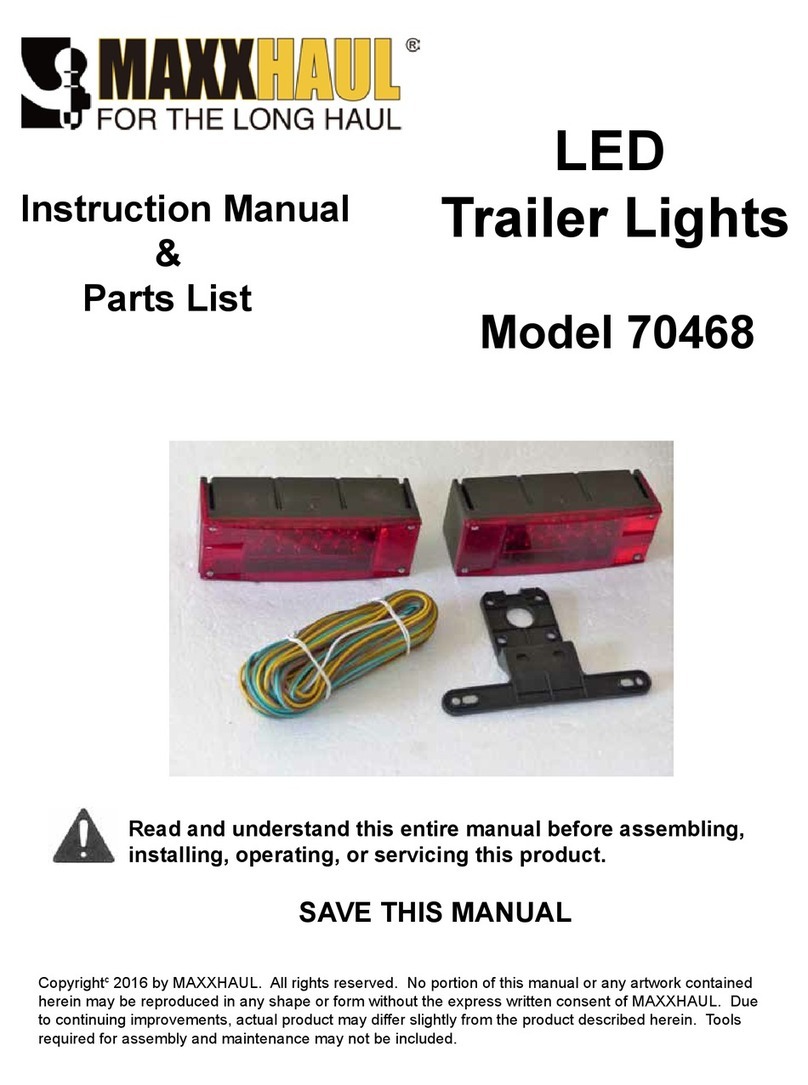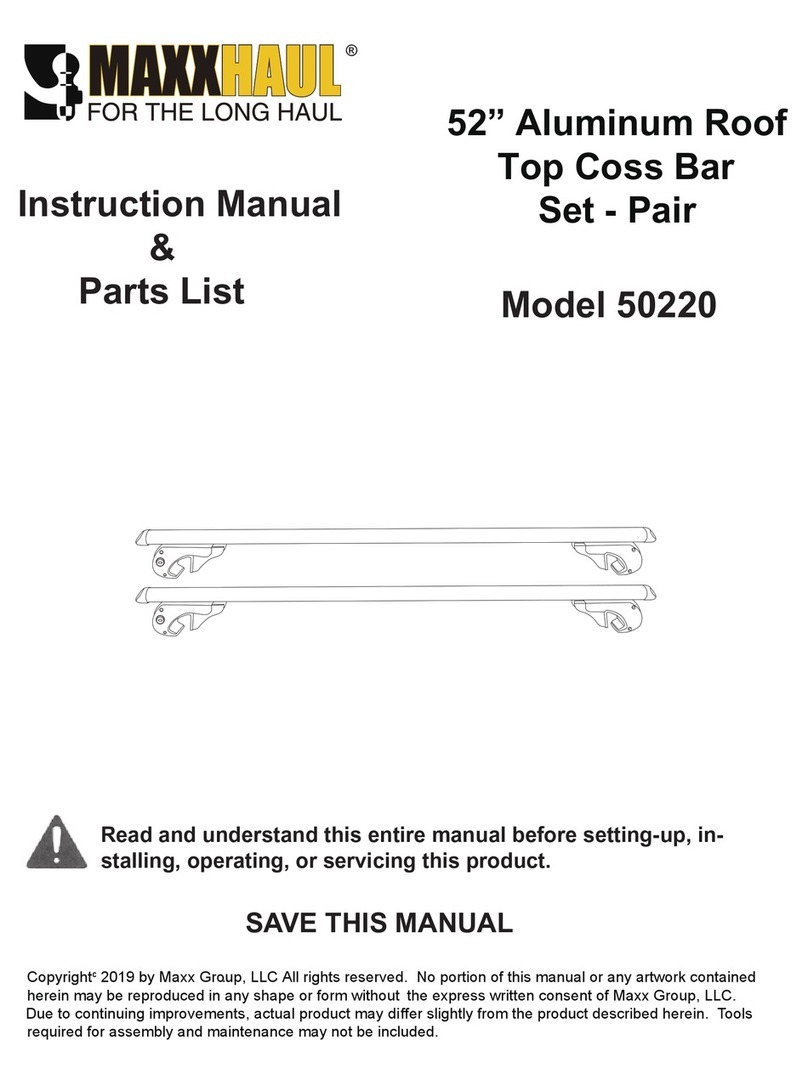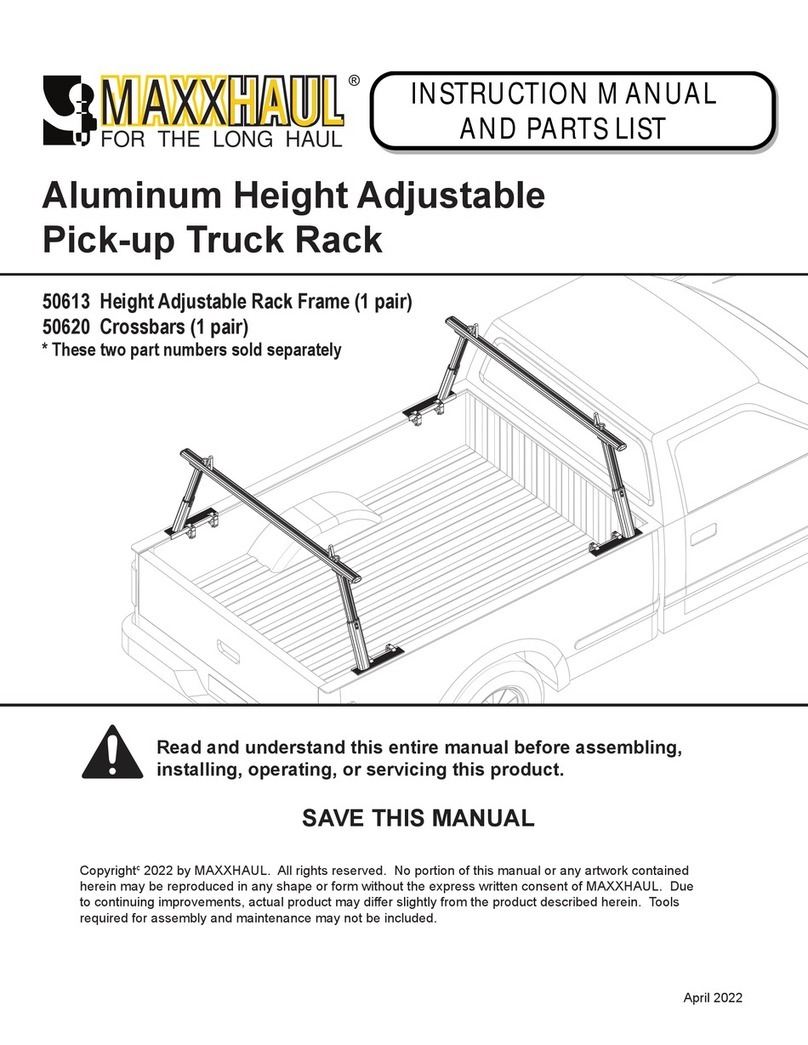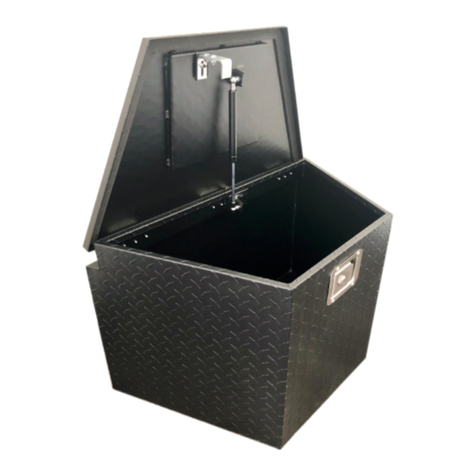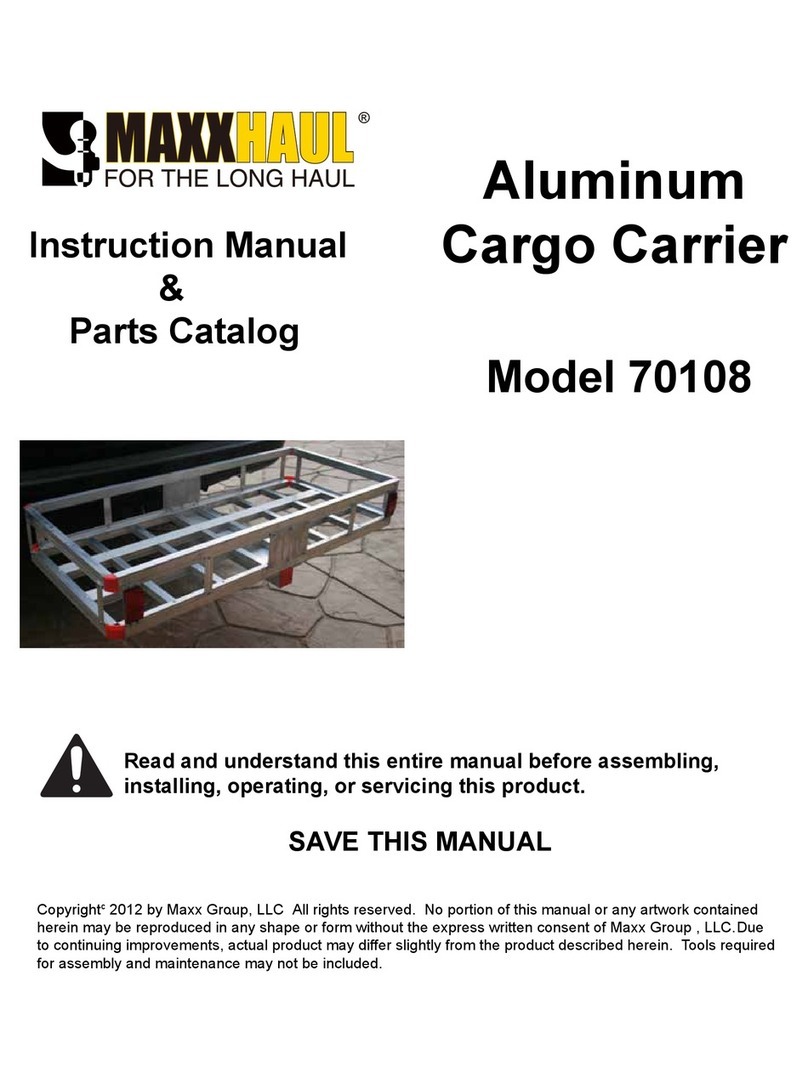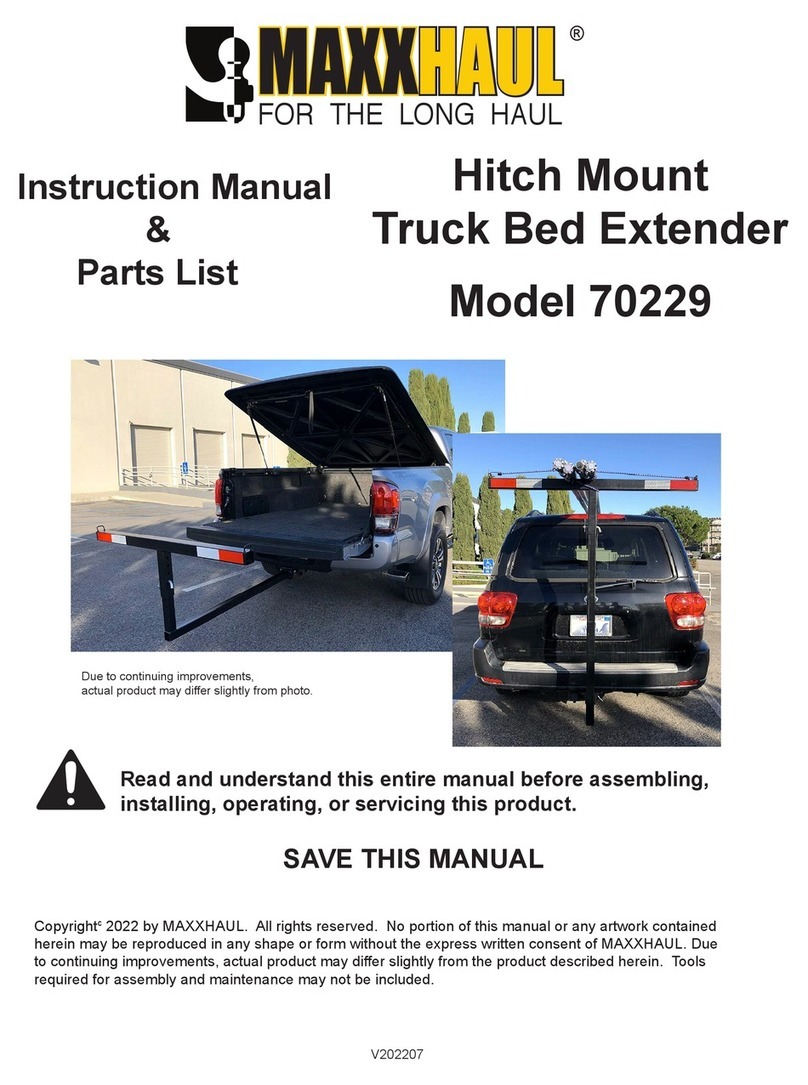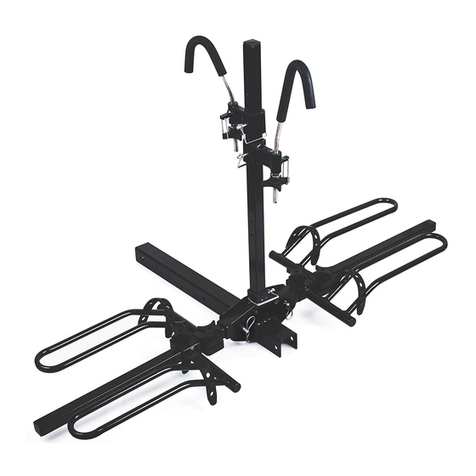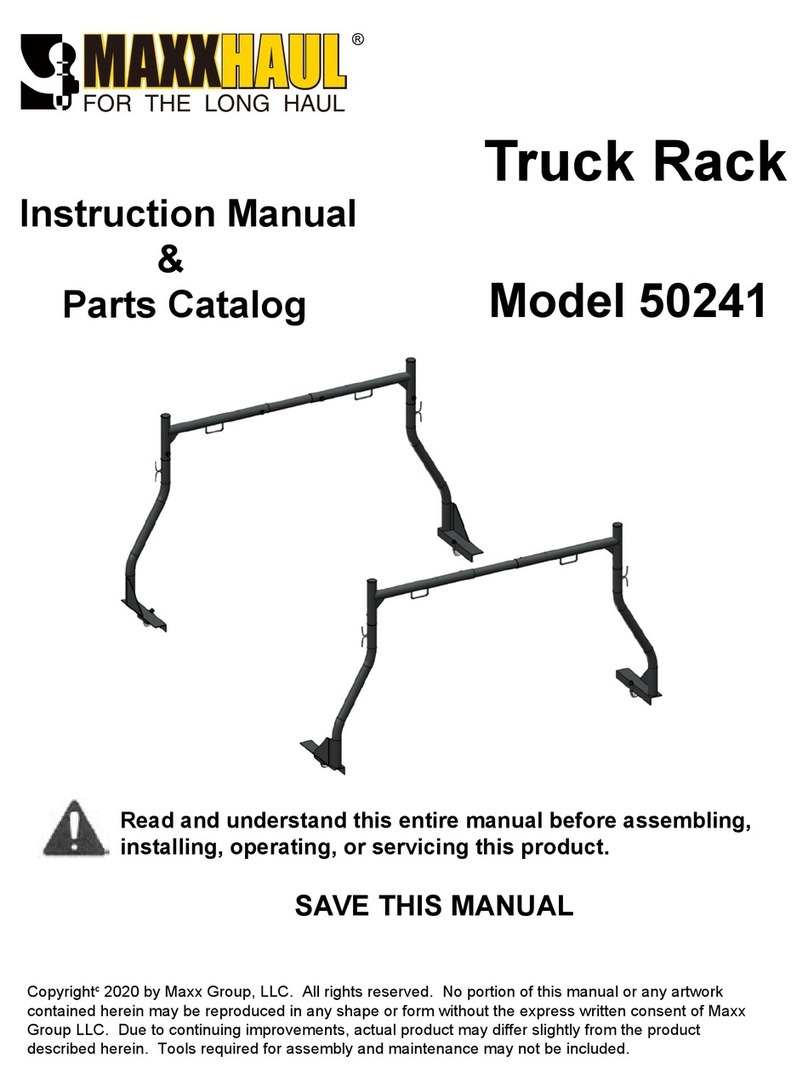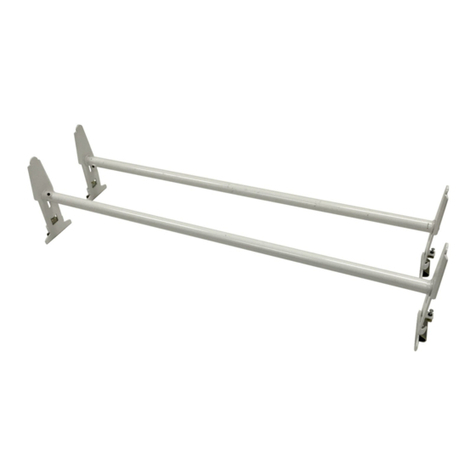
Model 70209 Page 3
Personal and Work Area Safety (continued)
F. While setting up and when loading/un-
loading the Cargo Carrier Bag, keep work
area clean and well lighted. Keep spectators
and children out of the work area.
3. Use of the Cargo Carrier Bag
A. Do not modify the Cargo Carrier Bag and
do not use this product for purposes that it
was not designed for.
B. Never exceed the maximum load ca-
pacity of 100 Lbs. This product is de-
signed to pack and travel with light duty
cargo and soft goods weighing no more
than 100 Lbs. Distribute weight evenly
inside the Cargo Carrier Bag.
C. Be aware of the danger of “dynamic
loading”7KLVVLWXDWLRQDULVHVZKHQDORDG
is dropped onto or thrown into the Cargo
Carrier Bag, resulting in a short term ex-
cessive load. Dynamic loading can result
in damage and failure of the Cargo Carrier
Bag, damage to the vehicle and its attached
cargo carrier, and personal injury to the per-
son loading the Cargo Carrier Bag.
D. Never load people or animals into the
Cargo Carrier Bag. Keep children and
spectators away when loading, unloading
and using this product.
($GKHUHWRDOO'HSDUWPHQWRI7UDQVSRUWD-
WLRQ'27UHTXLUHPHQWVZKHQXVLQJWKLV
product. Always use all of the adjustable
straps included to securely hold the cargo in
place.
F. For the vehicle that will support the Cargo
Carrier Bag, read all pertinent vehicle in-
structions and warnings provided in the
owner’s manual. Make sure that the vehicle
has the appropriate cargo carrier cross bars
needed to securely and safely mount the
Cargo Carrier Bag. Make sure the vehicle’s
engine is OFF, with parking brake set, before
setting up, loading or unloading the Cargo
Carrier Bag. Make sure the vehicle is in a
VDIHORFDWLRQDZD\IURPWUDႈFZKHQORDGLQJ
or unloading.
*7KLVSURGXFWZLOO
require set-up on top of the vehicle’s cargo
carrier. An assistant may be required to as-
sist in the set-up. Depending on the size of
the vehicle, use of a stool or ladder may be
required. Use extreme caution when using
a stool or ladder to prevent accidents. If you
are not experienced or capable of doing this
type of set-up, the Cargo Carrier Bag should
EHVHWXSE\DTXDOL¿HGVHUYLFHWHFKQLFLDQ
H. Make sure the vehicle’s engine is OFF,
with parking brake set, before loading or un-
ORDGLQJWKH&DUJR&DUULHU%DJ7KH&DUJR
&DUULHU%DJPXVWDOZD\V¿WZLWKLQWKHFURVV
bars of the cargo carrier. Never attempt to
carry a load that is wider that the vehicle.
Only attach the Cargo Carrier Bag to the ve-
hicle’s cargo carrier. Never attempt to strap
the Cargo Carrier Bag directly to the vehicle.
,2EH\DOOVSHHGOLPLWVDQGWUDႈFODZV$G-
here to all state and local regulations regard-
LQJORDGVWKDWH[WHQGEH\RQGWKHFRQ¿JXUD-
tion of the vehicle.
J. Make sure that hardware and straps are
secure prior to each trip.
K. Use caution when driving, turning, and
backing up near obstructions which could
interfere with the Cargo Carrier Bag and its
contents.
L. Do not attempt to mount the Cargo Car-
rier Bag on RV’s (Recreational Vehicles),
trailers or towed vehicles. Do not use the
&DUJR&DUULHU%DJRQRႇURDGYHKLFOHV
M. Maintain labels and nameplates on the
&DUJR&DUULHU%DJ7KH\FRQWDLQLPSRUWDQW
information and must always remain read-
able. Contact MAXXHAUL for replacements.
WARNING

